Imagine stepping into a backyard sanctuary that not only shields you from the elements but also elevates your outdoor experience to new heights. Whether you’re a budding enthusiast dreaming of your first patio cover or a seasoned pro seeking to enhance your alfresco haven, “8 Outdoor Shelter Ideas for Your Next Project” is your go-to guide for inspiration and practical know-how. With a blend of creativity and functionality, we’re here to help you turn any outdoor area into a beautiful retreat.
In this guide, you’ll discover a treasure trove of shelter ideas designed to bring comfort, style, and versatility to your yard. From simple solutions to intricate designs, these ideas are crafted to boost your confidence and inspire your imagination. Get ready to embrace the joy of outdoor living, as you create a space that reflects your unique style while offering protection and year-round enjoyment.
Incorporate Multi-functional Pergolas
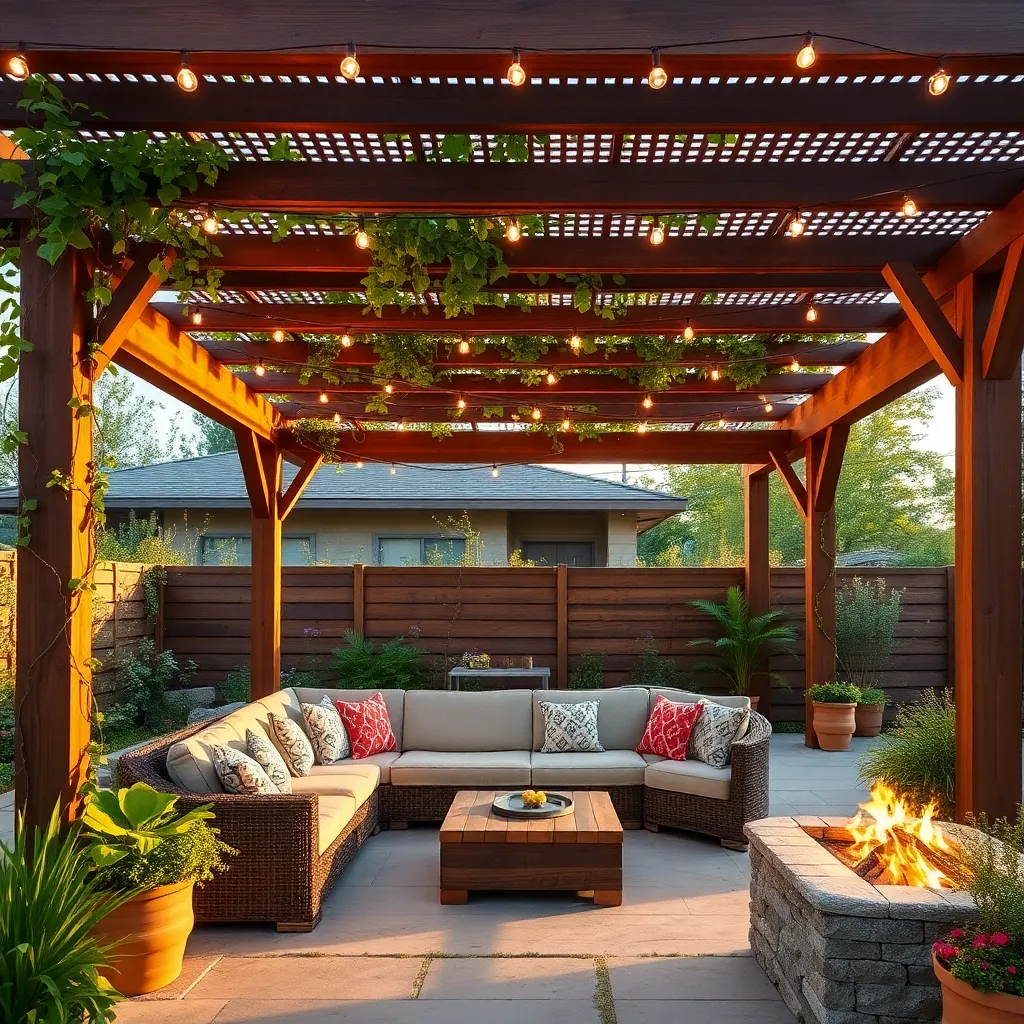
Incorporating a multi-functional pergola into your outdoor space can dramatically enhance both aesthetics and utility. Begin with choosing durable materials like cedar or pressure-treated wood for a long-lasting structure. For those with more experience, consider adding retractable canopies or sliding panels to provide adjustable shade and protection from the elements. Dimensions should be tailored to your space, with a standard recommendation of at least 10×10 feet to comfortably accommodate furniture or dining sets.
Think about integrating additional features to make your pergola truly multi-functional. Adding built-in benches or planters can maximize space while enhancing the natural appeal of your garden. To elevate the experience, incorporate lighting features like string lights or LED fixtures to create ambience for evening gatherings. For advanced DIYers, wiring for outdoor speakers can transform the area into an entertainment hub. By thoughtfully selecting design elements, your pergola can become a versatile centerpiece in your outdoor living area.
Utilize Retractable Awnings for Flexibility

Retractable awnings provide a versatile outdoor shelter solution, offering shade when needed and open skies when desired. Opt for durable materials like aluminum frames and weather-resistant fabrics to ensure longevity and performance. These awnings can be custom-fitted to your patio or deck dimensions, typically ranging from 8 to 20 feet in width, allowing you to choose the ideal size for your space.
For beginners, a manual retractable awning can be a cost-effective choice, while motorized models offer convenience for those willing to invest a bit more. Consider features such as wind sensors and remote controls for added functionality and ease of use. Expert tip: Incorporate integrated LED lighting to extend your outdoor enjoyment into the evening, creating a cozy ambiance without additional installations.
Opt for Eco-Friendly Roofing Materials
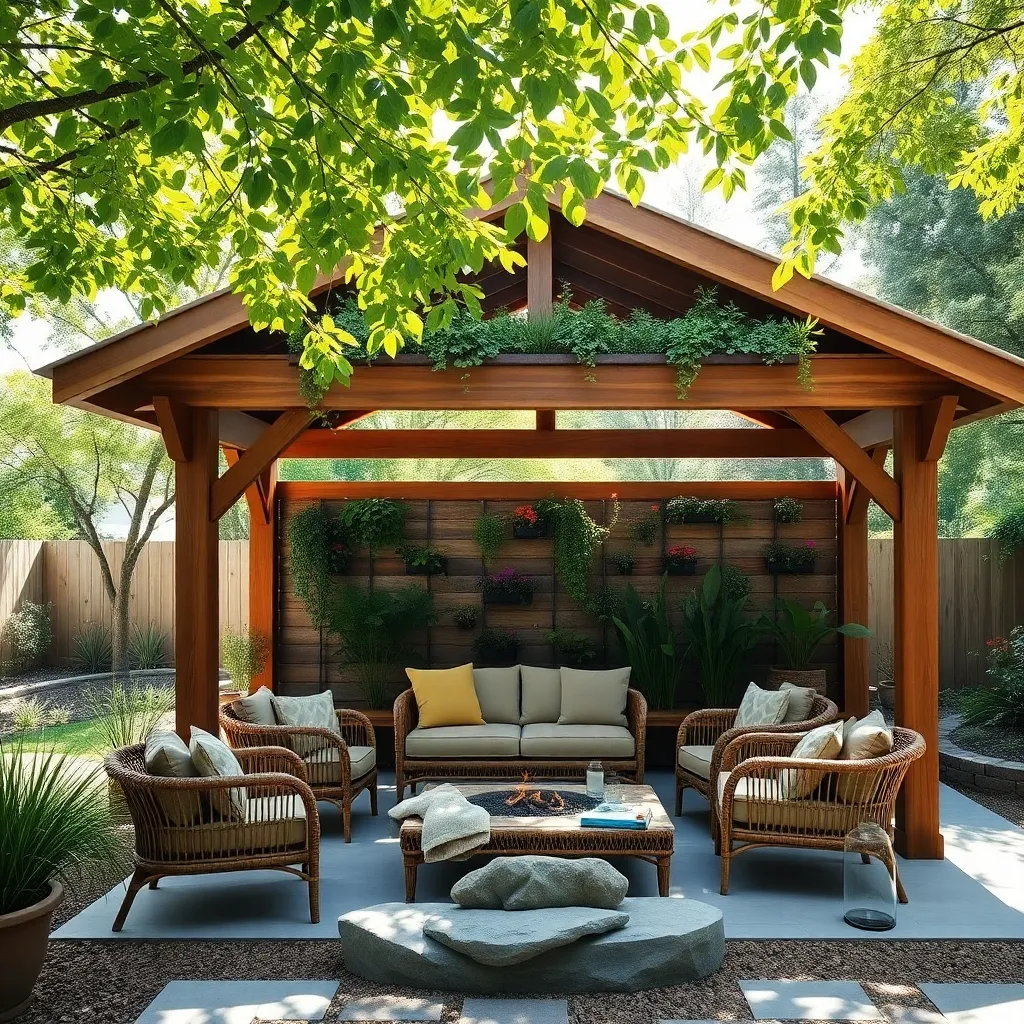
Choosing eco-friendly roofing materials for your outdoor shelter not only supports sustainability but also enhances the durability of your structure. Consider options like reclaimed wood shingles or recycled metal panels, both of which offer excellent weather resistance and a unique aesthetic. For those seeking more advanced solutions, green roofs—featuring plant layers—provide natural insulation and reduce stormwater runoff, though they require more planning and maintenance.
When selecting materials, prioritize durability and local availability to minimize your environmental footprint. Bamboo, for instance, is a fast-growing, renewable resource that can be used for roofing in many climates. If you prefer a more modern look, opt for solar tiles that integrate seamlessly with your roof and generate clean energy. To ensure the best results, consult with local experts to tailor your shelter to your specific environmental conditions and design preferences.
Add Privacy with Lattice Panels
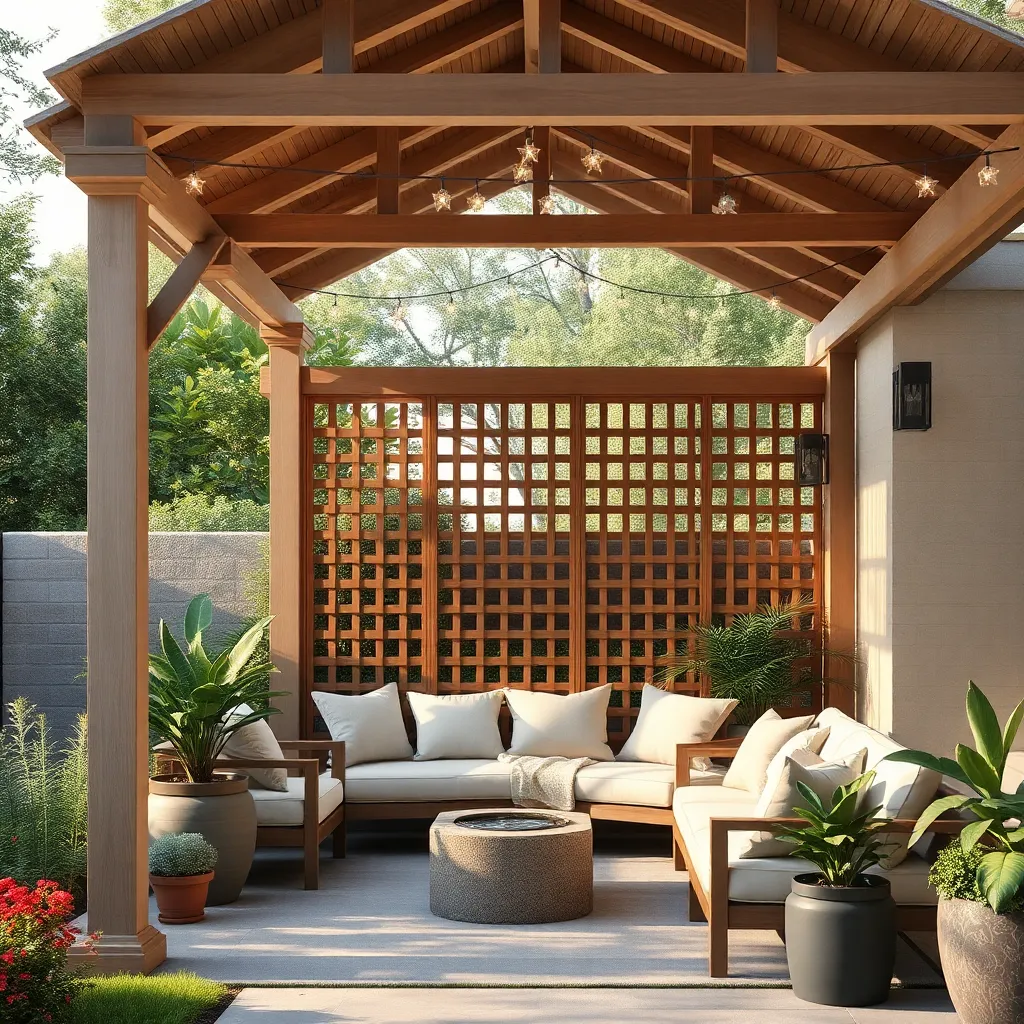
Introducing lattice panels is a stylish and effective way to add privacy to your outdoor space. These panels are available in various materials such as wood, vinyl, and metal, allowing you to choose one that complements your existing decor. Wooden lattice panels are a popular choice for their natural look and can be easily painted or stained to match your outdoor theme. For a more modern touch, consider metal or vinyl options which are low-maintenance and weather-resistant. Ensure the panels are securely anchored to withstand wind and weather conditions, and aim for a height of at least 6 feet to maximize privacy.
Enhance the aesthetic appeal of your lattice panels by incorporating climbing plants like ivy or jasmine, which can create a lush, green backdrop over time. For a more personalized touch, you might add decorative elements such as hanging pots or string lights to the panels. Advanced gardeners can experiment with custom lattice designs, cutting patterns into the panels for a unique visual effect. Remember, the key to a successful installation is to ensure your lattice panels are evenly spaced and level, providing both privacy and a pleasing appearance to your outdoor retreat.
Create Cozy Spaces with Fire Pits
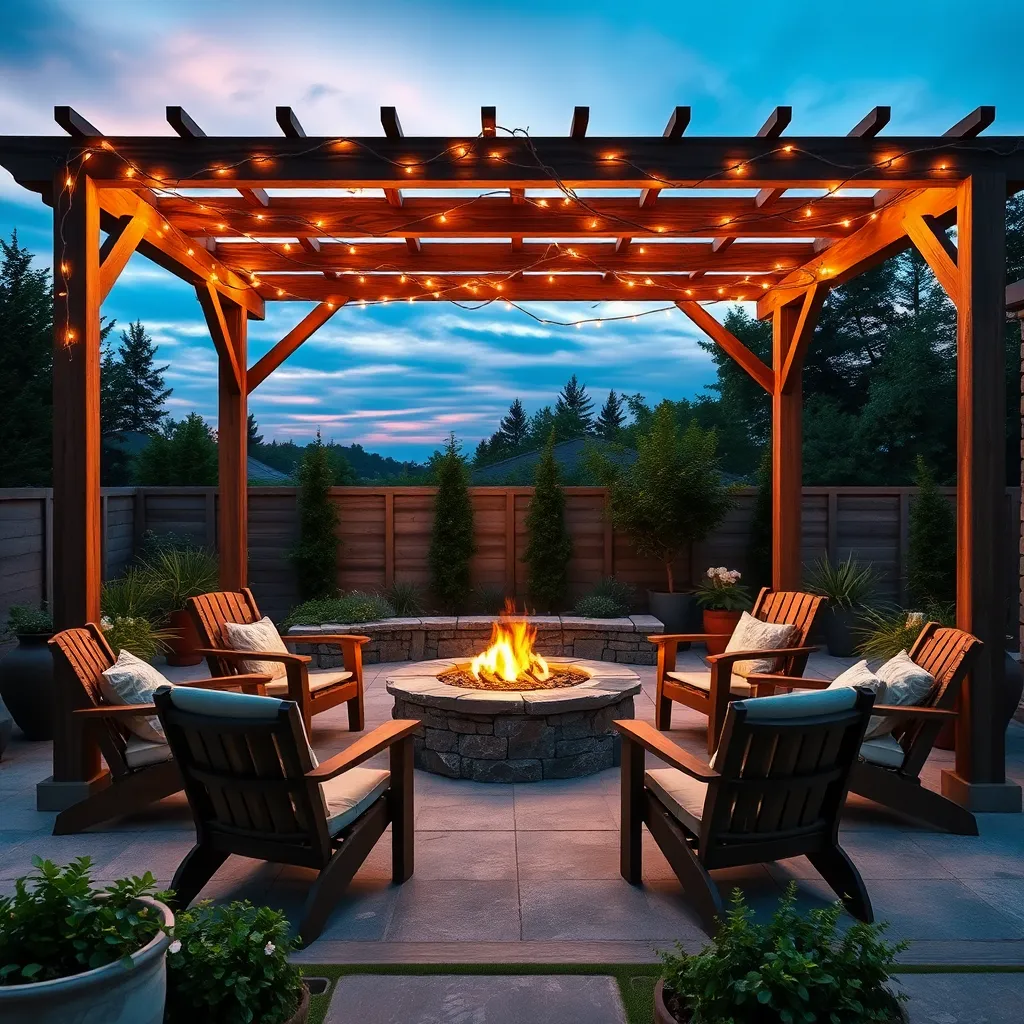
Transform your backyard into a cozy retreat by incorporating a fire pit, a feature that not only provides warmth but also serves as a captivating focal point. For a basic setup, choose a portable metal fire pit that can be easily moved and stored. If you’re looking to make a permanent addition, consider constructing a stone or brick fire pit with a diameter of at least 36 inches to comfortably accommodate gatherings. Select non-combustible materials like concrete, stone, or fire-rated brick to ensure safety and durability.
Enhance the ambiance by installing seating arrangements that invite relaxation and conversation. Opt for weather-resistant furniture like teak, wrought iron, or aluminum, which can withstand the elements while providing comfort. To add a touch of sophistication, consider building a circular seating wall or using cushioned outdoor chairs around the pit. For a more advanced touch, integrate a built-in wood storage area or include decorative elements like lava rocks or glass beads within the pit for visual appeal. Remember to follow local regulations and maintain a safe distance from structures and trees.
Install Durable All-Weather Furniture
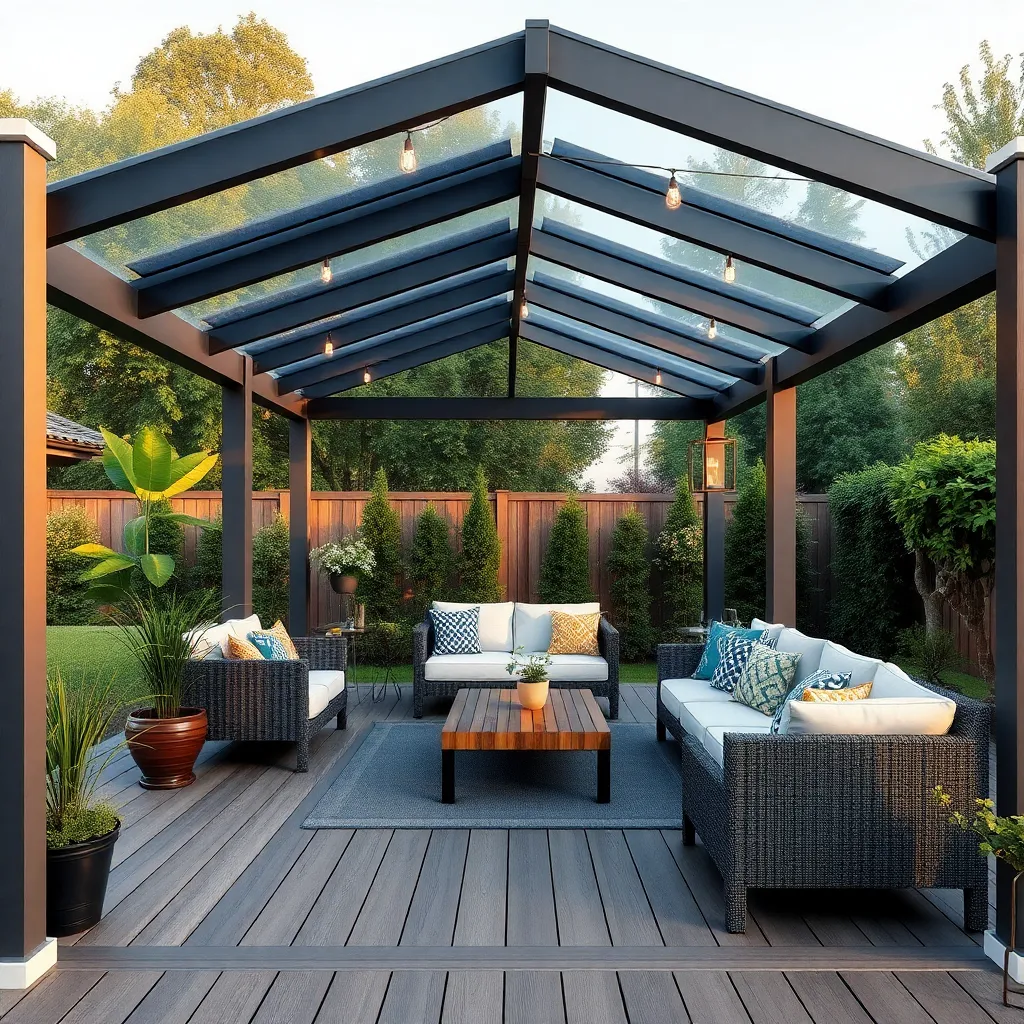
When planning your outdoor shelter, incorporating durable all-weather furniture is crucial for maximizing comfort and longevity. Opt for materials like teak, wrought iron, and high-density polyethylene (HDPE) that resist the elements and require minimal maintenance. For beginners, start with a sturdy outdoor dining set or a couple of lounge chairs, ensuring the furniture is UV-resistant to prevent fading. For those looking to elevate their outdoor space, consider adding custom cushions made from Sunbrella or similar weatherproof fabrics for both style and durability.
Consider the layout and dimensions of your outdoor shelter to ensure the furniture fits harmoniously with your design. Measure your area before purchasing to avoid overcrowding and allow for smooth traffic flow. Advanced gardeners might explore modular furniture options that can be rearranged as needed, providing flexibility for entertaining or relaxing. To extend the life of your furniture, invest in protective covers and place heavier items in sheltered areas during extreme weather conditions. This approach ensures your outdoor haven remains inviting and functional year-round.
Enhance Ambiance with Solar Lighting
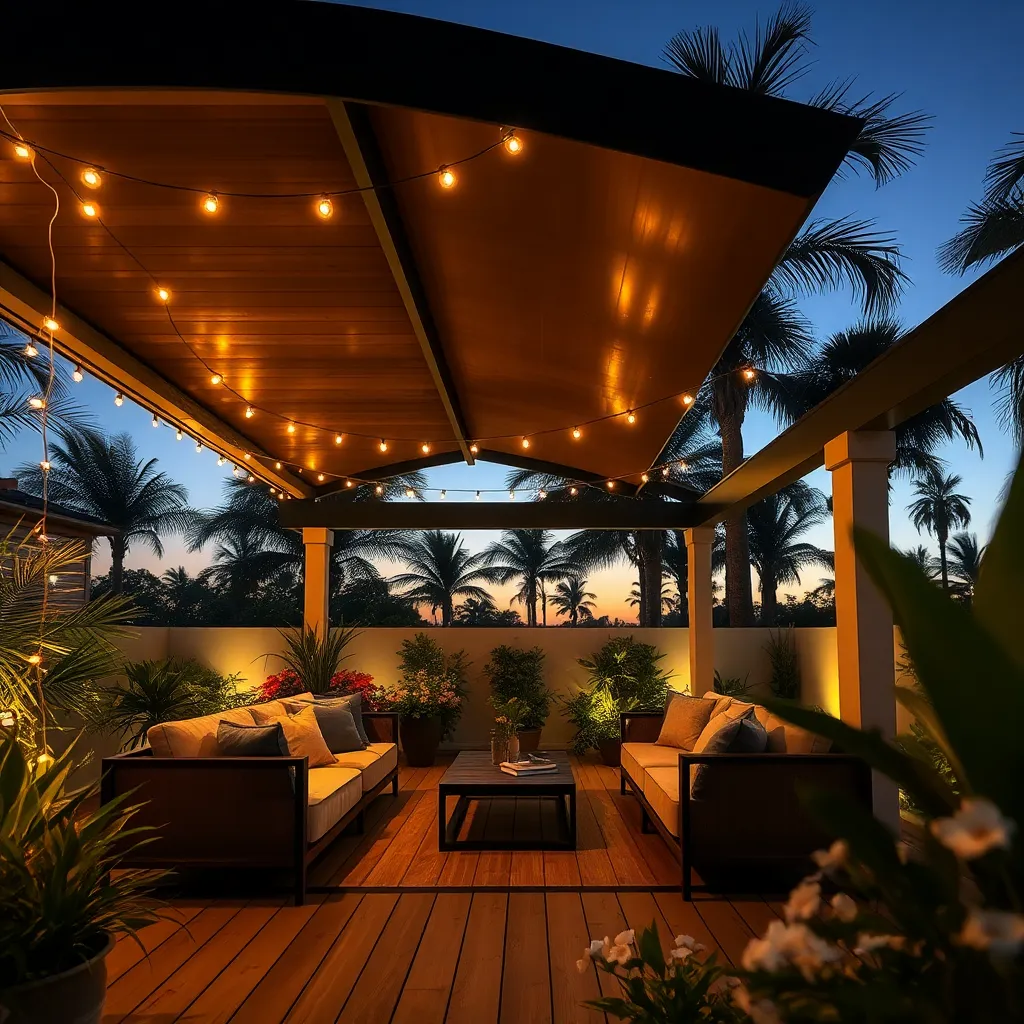
Incorporating solar lighting into your outdoor shelter is a simple yet effective way to enhance its ambiance. Start by selecting solar lights with durable, weather-resistant materials such as stainless steel or high-grade plastic to ensure longevity. Place solar path lights along walkways or around seating areas to create a warm and inviting atmosphere. For a touch of elegance, consider hanging solar lanterns or string lights from pergolas or gazebos, ensuring that the solar panels receive adequate sunlight during the day.
For those looking to add a unique flair, try integrating solar-powered spotlights to highlight specific features like a garden or a water fountain. Opt for adjustable solar fixtures to control the direction and intensity of the light, providing flexibility in design. Advanced gardeners might explore solar lights with built-in sensors for automatic on/off functionality, enhancing both convenience and energy efficiency. These practical enhancements not only reduce electricity costs but also contribute to a more sustainable outdoor living space.
Design with Windbreak Structures in Mind
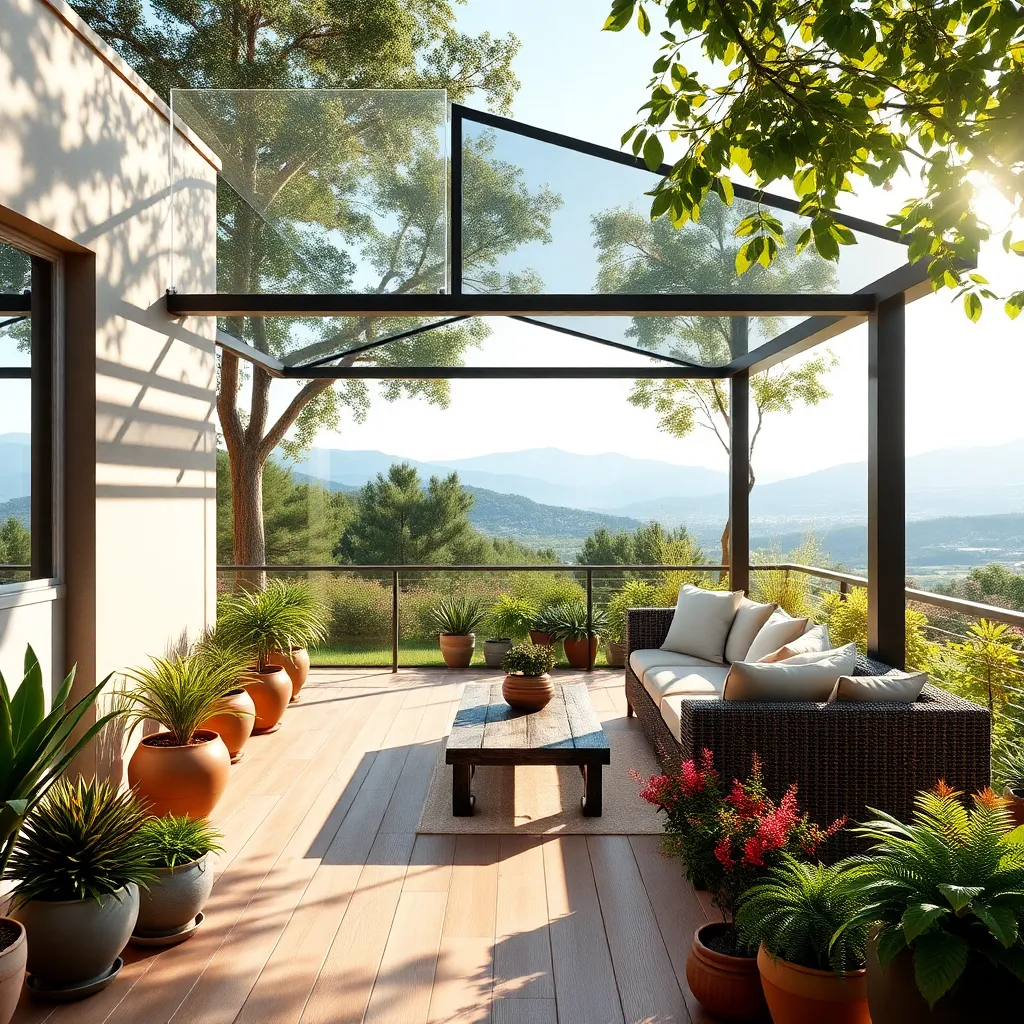
When designing outdoor shelters, incorporating windbreak structures can significantly enhance comfort and usability. Consider using materials like dense hedges, lattice panels, or wooden fences, which not only block wind but also add aesthetic value. For beginners, start with simple techniques such as planting fast-growing shrubs like privet or evergreen trees that can serve as natural barriers. Advanced gardeners might experiment with strategically placed trellises adorned with climbing plants, creating both a visual and functional windbreak.
For effective windbreaks, it’s crucial to position them correctly, typically at a distance of two to five times the height of the structure from your main area. This ensures optimal wind deflection without causing turbulence. Keep in mind that a semi-permeable windbreak, offering about 50-60% blockage, is often more effective than a solid barrier. Utilize materials like woven willow or bamboo screens, which allow some air to pass through while reducing wind speed, thus creating a more comfortable outdoor environment.
Conclusion: Creating Beautiful Outdoor Spaces
In exploring the ‘8 Outdoor Shelter Ideas for Your Next Project,’ we’ve journeyed through key relationship concepts that underscore the importance of creating nurturing spaces. From understanding the significance of shared environments to fostering communication in open-air settings, each idea serves as a metaphor for building stronger relational foundations. We’ve delved into adaptability, the importance of setting boundaries, and the value of investing time and creativity into your shared projects. Each concept is a stepping stone towards enhancing the quality of your connections, turning every outdoor shelter into a testament to your relationship’s resilience and growth.
As a next step, take a moment to discuss with your partner which shelter idea resonates most with both of you and make plans to bring it to life. This collaboration could be the start of a beautiful journey together.
Remember, a relationship is much like these outdoor projects—requiring care, commitment, and creativity. Save or bookmark this article to revisit these inspiring concepts whenever you need a boost. As you invest in these ideas, you’re not just building shelters; you’re paving the way for lasting relationship success. Let these insights guide you in crafting a future filled with love and understanding.
